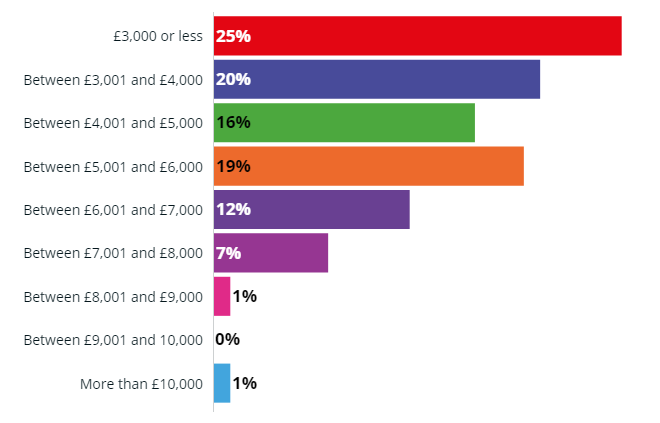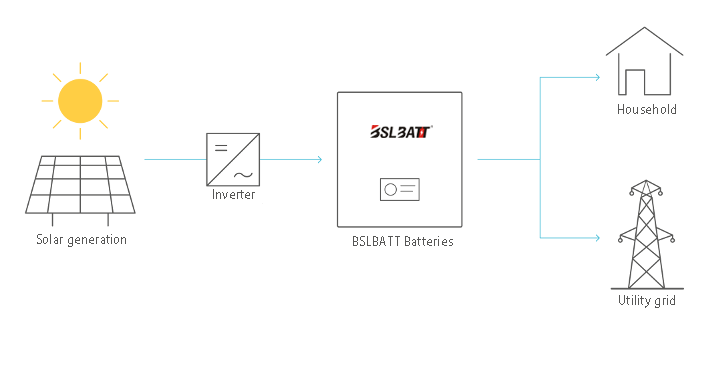The Island Area has been vigorously pursuing policies and programs to boost its solar power production and develop the solar industry, and its efforts are paying off. Increasingly,Island area has begun focusing on increasing its amount of energy storage to achieve greater energy resiliency, reducing energy usage in the residential and industrial sectors, and building a bridge to the future of energy independence by offering incentives for owners of battery storage systems. If you have solar PV panels or are planning to install them, then using home batteries to store the electricity you’ve generated will help you to maximize the amount of renewable energy you use. In fact, 60% of people who have, or would consider, a home battery told us the reason was so they could use more of the electricity generated by their solar panels. Home-energy storage will also reduce the electricity you use from the grid, and cut your bill. If your home is off-grid, it can help to reduce your use of fossil fuel back-up generators. In the near future, time-of-use tariffs will let you store up electricity while it’s cheap (overnight, for example) so you can use it during peak times. A few energy companies have launched these already. If you’re at home during the day and already use a large proportion of the electricity you generate or divert surplus electricity to heat your water (for example), then a battery may not be right for you. This is because home-energy storage will cost you more than £2,000, so you’ll need to make sure it’s a worthwhile investment. If you’re looking to save money by installing energy storage, like 17% of Which? members who are interested in home batteries*, read on for our first impressions of energy-storage systems available now. Before you think about storing electricity, make sure your home is as energy-efficient as possible. Can I save money with a solar battery? Which? members we spoke to typically paid either less than £3,000 (25%) or between £4,000 and £7,000 (41%) for a battery storage system (excluding the cost of solar PV, where relevant). Quoted prices in the table below range from £2,500 to £5,900.  How much Which? members paid for solar batteries Based on responses of 106 solar battery owners as part of an online survey in May 2019 of 1,987 Which? Connect members with solar panels. Installing a home-energy storage system is a long-term investment to help cut your energy bills, although this may not be your motivation.
How much Which? members paid for solar batteries Based on responses of 106 solar battery owners as part of an online survey in May 2019 of 1,987 Which? Connect members with solar panels. Installing a home-energy storage system is a long-term investment to help cut your energy bills, although this may not be your motivation.  Whether a battery will save you money will depend on: ●The cost of installation ●The type of system installed (DC or AC, the chemistry of the battery, connections) ●How it’s used (including the effectiveness of the control algorithm) ●The price of electricity (and how it changes during the lifetime of your system) ●The battery’s lifetime. Several systems come with a 10-year warranty. They require little maintenance, so the main cost is the initial installation. If you install it with solar PV (which can last 25 years or more), you should factor in the cost of replacing the battery. While the cost of a battery is high, it’ll take a long time for the battery to pay for itself. But if battery prices drop in future (as with solar panel prices), and electricity prices increase, then payback times would improve. Some storage companies offer financial benefits – for example, payments or reduced tariffs for providing services to the grid (eg letting spare electricity from the grid be stored in your battery). If you have an electric vehicle, being able to store cheap electricity to charge it could help to cut your costs. We haven’t yet tested home-energy storage systems to be able to calculate how much they could cost or save you. However, you should take into account whether you are on a tariff which has different electricity costs depending on the time of day and, if you generate your own electricity, how much of this you use already. If you get the Feed-in Tariff (FIT), part of it is based on the amount of electricity you generate and export to the gird. You’ll need to have signed-up already to receive the FIT as it is closed to new applications. If you don’t have a smart meter the amount of electricity you export is estimated at 50% of what you generate. If you do have a smart meter, your export payments will be based on actual export data. However, if you also have a home battery installed, your export payments will be estimated at 50% of what you generate. This is because your export meter cannot determine whether electricity exported from your battery was originally generated by your panels or taken from the grid. If you are looking to install solar panels and a solar battery, new Smart Export Guarantee (SEG) tariffs will pay you for any excess renewable electricity you have generated and export to the grid. Very few of these exist now but all companies with more than 150,000 customers have to offer them by the end of the year. Compare rates to find the best for you – but check that you’re eligible if you have storage installed.
Whether a battery will save you money will depend on: ●The cost of installation ●The type of system installed (DC or AC, the chemistry of the battery, connections) ●How it’s used (including the effectiveness of the control algorithm) ●The price of electricity (and how it changes during the lifetime of your system) ●The battery’s lifetime. Several systems come with a 10-year warranty. They require little maintenance, so the main cost is the initial installation. If you install it with solar PV (which can last 25 years or more), you should factor in the cost of replacing the battery. While the cost of a battery is high, it’ll take a long time for the battery to pay for itself. But if battery prices drop in future (as with solar panel prices), and electricity prices increase, then payback times would improve. Some storage companies offer financial benefits – for example, payments or reduced tariffs for providing services to the grid (eg letting spare electricity from the grid be stored in your battery). If you have an electric vehicle, being able to store cheap electricity to charge it could help to cut your costs. We haven’t yet tested home-energy storage systems to be able to calculate how much they could cost or save you. However, you should take into account whether you are on a tariff which has different electricity costs depending on the time of day and, if you generate your own electricity, how much of this you use already. If you get the Feed-in Tariff (FIT), part of it is based on the amount of electricity you generate and export to the gird. You’ll need to have signed-up already to receive the FIT as it is closed to new applications. If you don’t have a smart meter the amount of electricity you export is estimated at 50% of what you generate. If you do have a smart meter, your export payments will be based on actual export data. However, if you also have a home battery installed, your export payments will be estimated at 50% of what you generate. This is because your export meter cannot determine whether electricity exported from your battery was originally generated by your panels or taken from the grid. If you are looking to install solar panels and a solar battery, new Smart Export Guarantee (SEG) tariffs will pay you for any excess renewable electricity you have generated and export to the grid. Very few of these exist now but all companies with more than 150,000 customers have to offer them by the end of the year. Compare rates to find the best for you – but check that you’re eligible if you have storage installed.  Battery storage installation systems There are two types of battery installation: DC and AC systems. DC battery systems A DC system is connected directly to the generation source (eg solar panels), before the electricity generation meter. You won’t need another inverter, which is more efficient, but charging and discharging is less efficient, so it could affect your FIT (this isn’t usually recommended if you’re retrofitting a battery to an existing PV system). DC systems can’t be charged from the grid, according to the Energy Saving Trust. AC battery systems These are connected after the electricity generation meter. So you’ll need an AC-to-DC power unit to convert the electricity you generate into AC you can use in your home (and then back again to store it in your battery). AC systems are more expensive than DC systems, according to the Energy Saving Trust. But an AC system won’t affect your FITs payments, as the generation meter can register the total system output. Solar panel battery storage: pros and cons Pros: ●It helps you use more of the electricity you generate. ●Some firms pay you for allowing your battery to be used to store excess grid electricity. ●It could enable you to take advantage of cheap-rate electricity. ●Require little maintenance: ‘Fit and forget’, said one owner. Cons: ●Currently pricey, so payback time may belong. ●A DC system could reduce your FIT payments. ●ikely to need replacing during the lifetime of a solar PV system. ●If retro-fitted to existing solar PV, you may need a new inverter. ●Batteries added to existing solar PV systems are subject to 20% VAT. Batteries installed at the same time as solar panels are subject to 5% VAT. For BSLBATT customers, speak to the company directly to learn which battery storage systems are eligible. The BSLBATTBatterie Smart Energy Storage system is one of the most robust and advanced batteries on the market. By using intelligent energy management software, your battery system will automatically store energy during the sunniest times to ensure you have power at night or during a power outage. Additionally, the BSLBATT system can switch to battery power during peak usage periods to avoid peak demand or high time-of-use charges and save you even more money on your utility bill.
Battery storage installation systems There are two types of battery installation: DC and AC systems. DC battery systems A DC system is connected directly to the generation source (eg solar panels), before the electricity generation meter. You won’t need another inverter, which is more efficient, but charging and discharging is less efficient, so it could affect your FIT (this isn’t usually recommended if you’re retrofitting a battery to an existing PV system). DC systems can’t be charged from the grid, according to the Energy Saving Trust. AC battery systems These are connected after the electricity generation meter. So you’ll need an AC-to-DC power unit to convert the electricity you generate into AC you can use in your home (and then back again to store it in your battery). AC systems are more expensive than DC systems, according to the Energy Saving Trust. But an AC system won’t affect your FITs payments, as the generation meter can register the total system output. Solar panel battery storage: pros and cons Pros: ●It helps you use more of the electricity you generate. ●Some firms pay you for allowing your battery to be used to store excess grid electricity. ●It could enable you to take advantage of cheap-rate electricity. ●Require little maintenance: ‘Fit and forget’, said one owner. Cons: ●Currently pricey, so payback time may belong. ●A DC system could reduce your FIT payments. ●ikely to need replacing during the lifetime of a solar PV system. ●If retro-fitted to existing solar PV, you may need a new inverter. ●Batteries added to existing solar PV systems are subject to 20% VAT. Batteries installed at the same time as solar panels are subject to 5% VAT. For BSLBATT customers, speak to the company directly to learn which battery storage systems are eligible. The BSLBATTBatterie Smart Energy Storage system is one of the most robust and advanced batteries on the market. By using intelligent energy management software, your battery system will automatically store energy during the sunniest times to ensure you have power at night or during a power outage. Additionally, the BSLBATT system can switch to battery power during peak usage periods to avoid peak demand or high time-of-use charges and save you even more money on your utility bill.
Post time: May-08-2024








